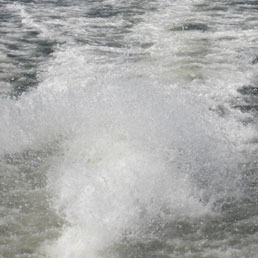3. Liquid Materials

Salt water … Oil… Rain water … Melting ice caps. Much of planetary life depends on liquid materials.
In these investigations we return to our two liquid earth materials — mineral oil and water — to find ways to measure and compare liquid volumes. Liquids take the shape of their containers, and when the containers vary in shape and or size, it’s hard to tell with our senses how much more space one sample of liquid takes up than another. Confronted with this dilemma, students see a need for a standard unit of volume measure that they can use to measure liquids. They use centimeter cubes to calibrate containers and then carefully measure the volumes and weights of different–sized samples of the liquids. Students then compare the results and consider some of the properties of the two materials.
As they investigate the liquids, students become familiar with a new unit of measure (cubic centimeters) and discover that "heaviness for size" — our preliminary understanding of density — is a property of materials that is independent of sample size.
Investigations:
- 3.1 How can we compare the volumes of liquids?
- 3.2 How can we measure the volume of a liquid?
- 3.3 How do oil and water compare?
The Child and the Scientist

The Child:
The Challenges of Learning About Liquid Materials

The Scientist:
What's important about liquid materials?





